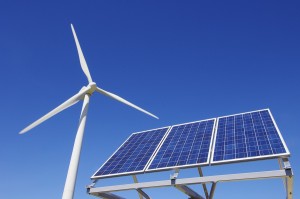 Though the end of 2013 was supposed to mark the end of various kinds of energy tax incentives, the Senate Finance Committee decided to extend some of the possibilities through the Expiring Provisions Improvement Reform and Efficiency Act (EXPIRE). EXPIRE was approved in April, 2014, potentially extending the duration of various provisions that had already expired or are about to expire.
Though the end of 2013 was supposed to mark the end of various kinds of energy tax incentives, the Senate Finance Committee decided to extend some of the possibilities through the Expiring Provisions Improvement Reform and Efficiency Act (EXPIRE). EXPIRE was approved in April, 2014, potentially extending the duration of various provisions that had already expired or are about to expire.
The Renewable Energy Production Tax Credit is one of the provisions affected by EXPIRE. What does this legislative change mean?
The Consequences of EXPIRE
The EXPIRE act is currently being considered by the US Senate. It focuses on several key expiring provisions like the Renewable Energy Production Tax Credit (PTC). If this bill becomes a law, investors will qualify for an energy tax credit for any wind energy development that begins by the end of 2015.
The popularity of wind energy production is growing but the sector has been influences by the numerous legislative and regulatory changes. The uncertainty has led to a decline in the number of developments and the investment in this alternative form of energy production.
PTC was introduced under the Energy Policy Act of 1992. Since then, the energy tax incentive has been allowed to expire a total of five times. Such developments have understandably led to some stagnation in the field of renewable resource energy projects. According to the American Wind Energy Association, the expiration of energy tax credits has led to a decrease in the number of domestic installations ranging between 76 and 92 percent.
PTC was allowed to expire one final time in the end of 2013. Quick actions by Senate and the extension of the energy tax incentive could result in a more robust wind energy production sector, which is why EXPIRE is so important.
More Extensive Reforms?
According to the Senate Finance Committee, more extensive and permanent measures will be needed to stimulate energy efficiency and to decrease the reliance on fossil fuels for electricity production.
EXPIRE is just a temporary possibility for extending the renewable energy tax credit benefits. Several committee members including Chairman Ron Wyden have said that EXPIRE is the last expiring provisions act that the committee will deal with. Extensive taxation reforms that focus on energy efficiency will be needed in the future.
It seems that the benefits of EXPIRE and the extension of energy tax credits are clearly understood. On June 26, 2014, Congressional leaders received a petition that urges them to support EXPIRE.
Clean Energy and the Future of the US
The investment in energy production from renewable sources has increased significantly since 2004 and energy tax incentives are one of the reasons for such positive developments. According to one report, the investment in wind, solar and geothermal energy has gone up nearly 250 percent and it reached 36.7 billion dollars in 2013.
Experts also predict that nearly 46.6 percent of the electricity consumption will come from renewable sources by 2030. The production of coal-based electricity is expected to see a significant drop by the same year, which paints a rather complete picture about the future of energy production.
The investment potential of clean energy is significant and the extension of policies like Renewable Energy Production Tax Credit will be essential for boosting the popularity of such projects.
Steve Nanos
Latest posts by Steve Nanos (see all)
- LED Lighting – A Great EPAct 179D Qualification Possibility - February 3, 2015
- 45L Credit Requirements for Begun Constructions - January 29, 2015
- Can Section 179D Incentives Help Businesses Save a Lot of Money? - January 27, 2015

 609.275.8484
609.275.8484